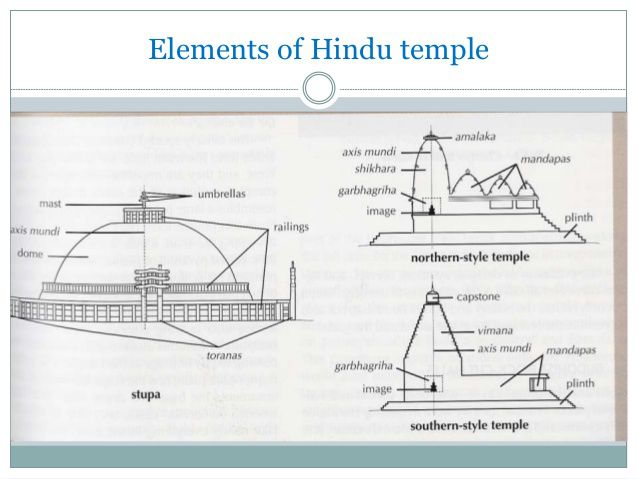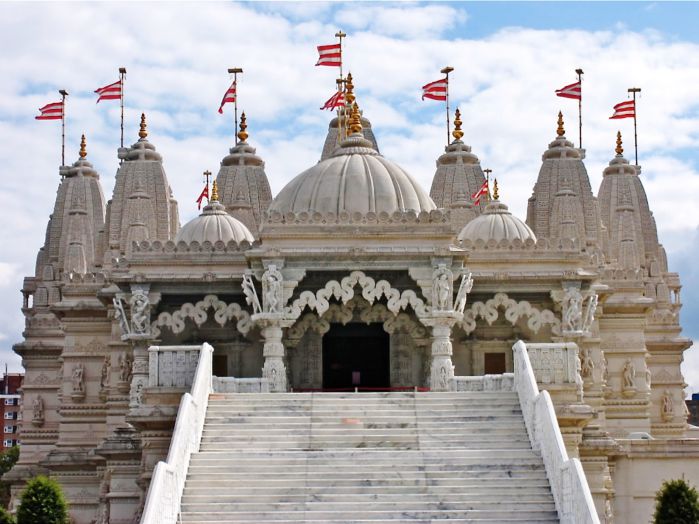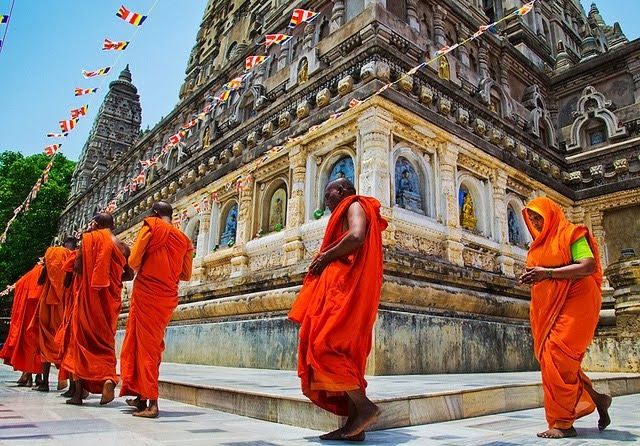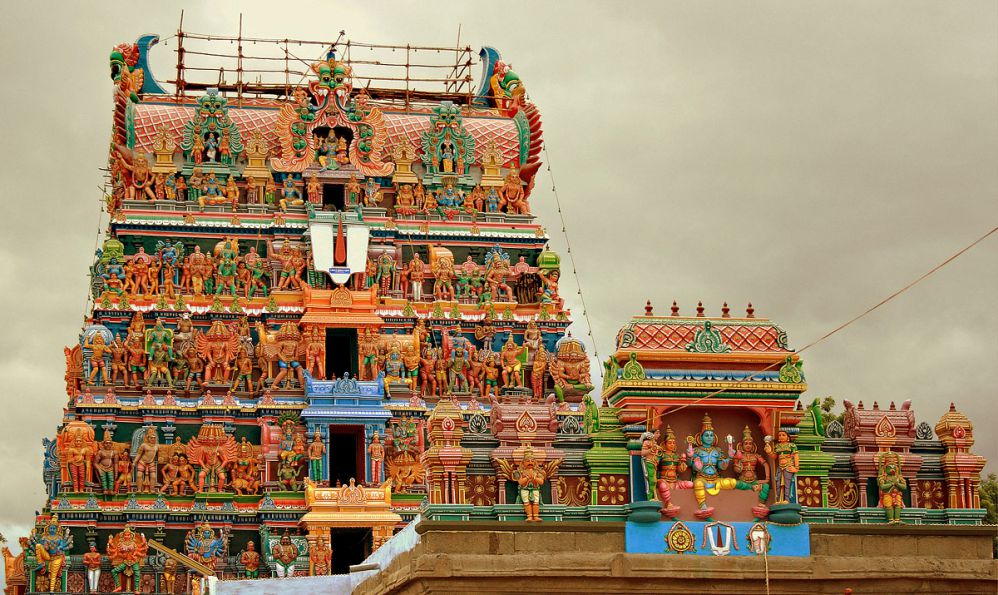No products in the cart.
The exquisite external appearance and minute interior details engraved on the walls, ceilings and pillars entices even atheists to observe and be astounded by the ambiance created by the Hindu temples. The Hindu temples in India alone exceeds a whopping hundred thousand in number, excluding those present outside India such as South Korea, Australia, Hungary, Brazil, Belgium etc., thereby making its presence ubiquitous. Almost all of these temples follow a pattern in its architecture; the structure of the Hindu temples are basically derived from four pertinent principles of human life, namely, Artha (wealth, prosperity), Kama (pleasure, sex), Dharma (ethics, values), Moksha (self-realization, freedom from life). It is built under the conception that everything in the universe is interconnected and promotes oneness.

From an architect’s perspective it can be thought of as an eclectic choice of shapes, embellished with the preponderance of squares and circles. The entrance of the temple, positioning of the gods and all the other details that are pertaining to directions are constructed based on the concept called ‘Vastu Shastra’, which literally means ‘science of architecture’, which forms the rubrics of construction for the architects. It utilizes geometric patterns (yantra), symmetry and directional alignments. The rudimentary structure consists of a dome on the top forming concentric circles or follows a square grid principle, where a peculiar shape is formed by rotating a solid in equal angles, multiple times reaching 360 degrees about its central axis, thereby giving it a solid and lavish body. The structure of the Virupaksha temple in Hampi, Vijayanagar, Karnataka, forms its fundamentals from the square grid principle, while the holy Pushkar temple located in Rajasthan is constructed by obliging to the concentric circle principle. Predominant number of Hindu temples portray perfect square grid principle, however few exception like the Teli-ka-mandir in Gwalior, built during the 8th century follows a rectangular shape in a 2:3 proportion rather than a square. Further many temples and shrines follow 1:1, 1:2, 1:3, 2:5, 3:5, 4:5 ratios. These ratios are extremely accurate and are perfectly blended in the temple structures, proving that those architects who digressed from the norms of the temple structure, intending to follow these harmonic ratios and rectangular pattern were not fallacious in their ratiocination. Such aberration from the norms suggests that ancient Sanskrit manuals for temple construction are mere guidelines, and Hinduism allows its artisans flexibility in expression, creativity and aesthetic independence.
The Different Styles of Hindu Temple Architecture
It can be observed that there are numerous differences in the temple structures and orientations as one moves across India from the north through the south, construed by the change in the climatic conditions, terrain profile, lifestyle, general beliefs and traditions. The ancient texts in the Shastras are classified into three orders, namely, the northern style called ‘Nagara’, the southern style ‘Dravida’ and the hybrid style ‘Vesara’ (which can be usually seen the Deccan region). In the Dravidian style of construction the temples are given pyramid shaped towers and are generally built using soapstone, sandstone or granite. The principle part of the temple is called the Vimana, which is a square surmounted by a pyramidal structure. The most pertinent part inside the temple is called the Mandapas (porches), which cover the doors leading to the cell where the deity is located. The top most part of the temple structure, possesses an ornate ‘Gopuram’ which is specific to the south Indian style, topped by a ‘kalasam’, a bulbous stone finial, which is believed to bring luck and prosperity to those who view it from outside the temple right before they enter or after they leave the temple premise on the completion of the darshan. The temple gopuram is constructed in a way that it is perfectly visible from any point outside the temple and conspicuously maintains line-of-sight with the devotees. Every other intricacies of construction was highly dependent on the dynasties that pervaded erstwhile. In the south, dynasties such as Chera , Chola, Pandiya, Pallava etc., were the linchpins of the contemporary temples that were built erstwhile.

Meanwhile, in North India, vast regional variations in the structures may be expected. The temples are basically squares with several gradual projections in the center of each side providing a cruciform shape with a number of re-entrant angles on each sides. A typical Hindu temple structure in northern India comprises a square garbhagriha preceded by one or many adjoining pillared mandapas (halls or porches), that are linked to a sanctum by a vestibule (antaralas). The opening of the sanctum is embellished with figures of water goddesses and geometric ornamentation. The temples usually contain a shrine and a hall that maintains silence and serenity inculcating peace in the minds of devotees, thereby bringing them to a state of equanimity. The Parashurameshvara temple in Bhubaneshwar at Orissa sets the paradigm of the North Indian style temple.
The extant sculptures inside the temples are a result of the beliefs of people in that region. For example, Lord Muruga fanatics are widespread in South India, and individual temples are constructed for that particular god, where lord Muruga is the only deity. In the north, there is comparatively less popularity for this deity, and such temples dedicated to this god is scarcely found. A stark contrast to this, there is a very popular temple dedicated to Lord Muruga in Malaysia located in the Batu Caves, which has a 42.7 meters (140 ft) high statue of the deity.

Albeit, beyond all the differences, there are several notable similarities in the temple structures all around India. An ambulatory is provided around the sanctum to perform a process called ‘Pradakshina’, where the devotee walks around the deity through a path praying for wellbeing and chanting mantras along the way, while the walls of the mandapa in which the lord is situated usually have few openings through which the devotee has a full view of the lord, thereby getting an absolutely satisfied darshan and exuberance. A sufficiently big bell is found hanging approximately from the center of the ceiling at each mandapa of every deity, so that when an Aarti (burning camphor) is performed, this bell is struck, and the din created by this bell aids the devotees to contribute comprehensive attention to the deity and vent out his/her problems to find a sanguine solution. Similarly, every subtle object or carvings possesses a very divine theory or belief behind it, everything ultimately enabling the devotee to become totally pious. Strategically located mandapas, perfectly spaced pillars, meticulously carved figures, beautifully and scrupulously stoned sculptures, forms the integral part of the temple and gives a beatific environment to meditate.
Hindu Temple Architecture – Serenity Personified
The architectural excellence seen in all the temples are of sublime virtue, and solely attribute its beauty to the sanctimonious ambiance created by flamboyant structures, that accrue to the picturesqueness. The architect first puts in front the priorities of the lord and his convenience to be supine in a well situated area, emerged into his comfort zone, then comes the devotees, who care only for the lord and whose only motive is to get his darshan and attain purity. Florid decorations surrounding the premises enables the devotees to dwell in the serenity, maintain their composure and focus their attention on the lord, eventually to win his benedictions. With marvelous talents and a commendable and sublime technical acumen, these artisans bereft the advantage of such cutting technologies and state of the art devices and artificially intelligent machines present in the contemporary world, have portrayed the highest embodiment of civil engineering skills that were probably inveterate and innate, making these places of worship venerable and have taken it to the next level by transforming the Hindu temples into a most visited tourist spot apart from being places of worship, thereby spreading the ideals of the religion all over the world, exacting due respect to the Hindu culture.

